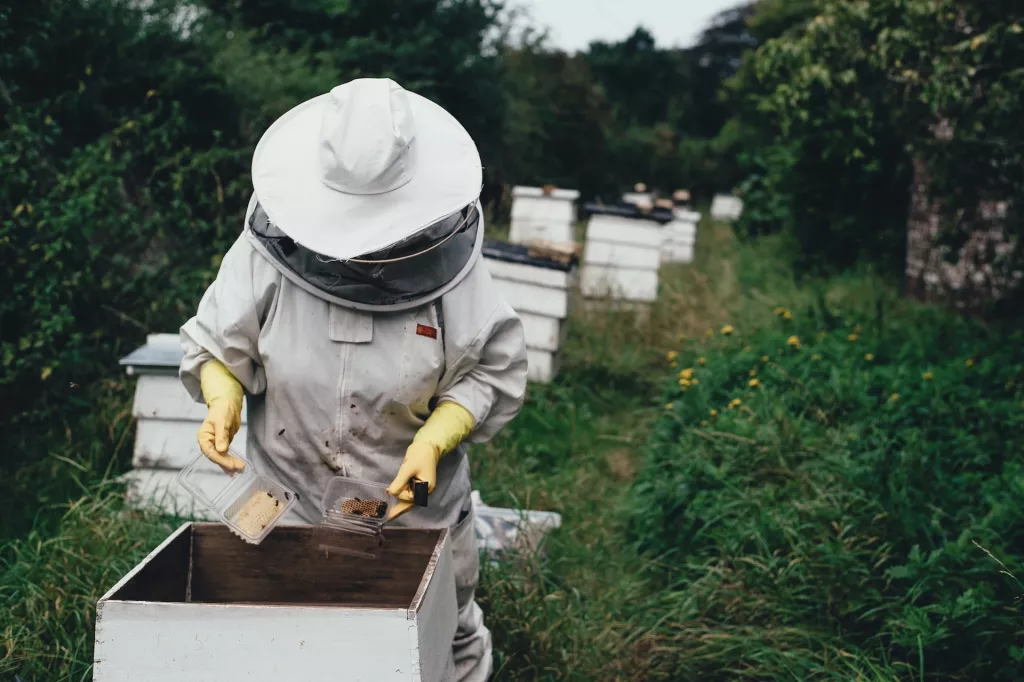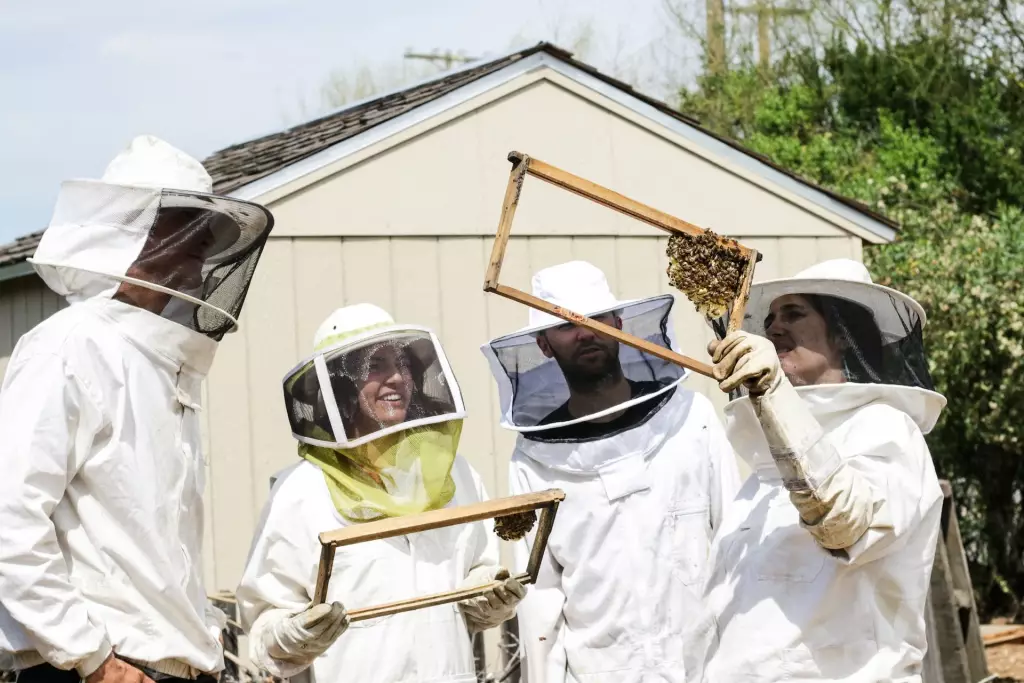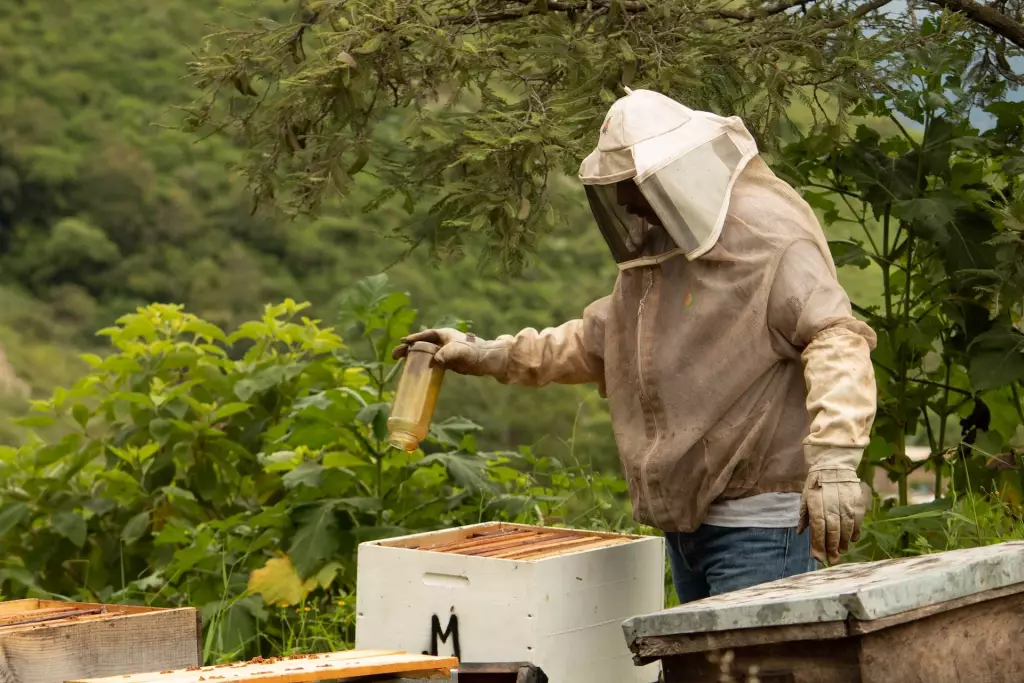Cost of Starting a Beehive: Detailed Breakdown
Bee-witched by the thought of setting up backyard apiary? Welcome to the club! You’ve got an exciting new hobby, and maybe even a new career, to look forward to. Find out how you can prepare your wallet for your journey as a beekeeper.
Your total spend on the first colony should be around $700, and around $500 on subsequent colonies. The first colony is roughly twice the amount of subsequent colonies because you need to factor in the cost of buying protective gear, basic tools, and maintenance costs.
At first glance, seven hundred bucks can seem like a steep price. However, it’s comforting to know that the cost of starting a bee hive does get significantly lower after the first—not just in terms of money, but in time and effort as well.
Summary
- The average cost of your first beehive will be about $700, and each consecutive hive will cost $500.
- The total cost of beekeeping gear is roughly $150, and yearly maintenance cost will amount to roughly $500 depending on where you live.
- The total cost of starting your first hive will be roughly $850 upfront + $500 per year.

On this page:
The Full Cost Breakdown of Starting a Beehive
| Expenditures | Estimated Price |
|---|---|
| One Complete Beehive | $260 to $275 |
| Bees | $140 to $300 |
| Protective Gear | $90 to $120 |
| Basic Tools | ~$43 |
| Maintenance Costs | ~$475 |
| Winterization | $50 to $75 in colder regions |
| Total Spend on First Colony | ~$700 |
| Total Spend on Subsequent Colonies | ~$500 |
As your backyard apiary grows, you could just split your original colony to make a new one. Alternatively, some colonies will swarm (leave to find a new hive) on their own. So the cost of getting new bees has not been factored in the total spend for subsequent colonies.
These estimations do not cover the cost of shipping (this depends on where you are based and where you are buying your products from), emergency funds, and honey extraction equipment, because you should not be harvesting honey on your first year.
Narrowing Your Budget: What You Can Expect to Spend On
Bee Colony
| Type of Package | Price |
|---|---|
| Package | $140 to $185 |
| Nucs | $175 to $220 |
| Queen | $35 to $45 |
| Full-Sized Bee Colony | $150 to $300 |
| Swarm | Free |
Package
There are four different ways you can acquire bees: packages, nucs, full-sized colonies, and swarms.
Packages are cheaper and more convenient, but the bees are usually agitated and they may not work well as a team. Nucs are more expensive and only available in April and May. This is because more time and effort has been spent in splitting a colony, and making sure that the honeybees know how to work with each other.
Queens aren’t always included in packages or nucs, so clarify this with your provider before finalizing your purchase.
Beginners are advised against purchasing full-sized colonies because it takes a lot of skill to catch up with the scale of handling an established hive. Meanwhile, swarms are difficult to catch and their temperament can be unpredictable.
Strategic beekeeping is about minimizing the risk of losing a colony and getting hurt. In this case, a nuc would be the best option.
Breed or Race
Honeybees are classified into different breeds according to their genetic history. The most common types include Italian, Caucasian, and Carniolan bees. Recently, hybrid races have also been innovated to have specific traits like resistance to Varroa mites, like Saskatraz. Mites are a leading cause of lost colonies, especially if the infestation is not treated properly.
Determining the race of honeybee you’ll start out with is crucial. Locally sourced honeybees have already genetically adapted to your local climate. If you’re not careful, the introduction of a foreign breed could harm the local ecosystem.
Beehive
| Hive Components | Estimated Price |
|---|---|
| Brood Box | $15 to $22 |
| Honey Super | $13 to $19 |
| Top Cover | $23 to $24 |
| Inner Cover | $12 to $19 |
| Bottom Board | $16 to $22 |
| Telescope Outer | $21 to $36 |
| Migratory Outer | $13 to $19 |
| Frame (should be bought in sets of 8 or 10) | $1 to $2 |
| Foundation | $1 to $2 |
If you are just starting out, the Langstroth variety is a decades-old tried and tested hive. This is the most common model in North America. As someone who is just starting out, try going for one that is already fully assembled and ready to ship for convenience’s sake.
Gear and Equipment
| Equipment Category | Estimated Price |
|---|---|
| Bee Suit | $20 to $160 |
| Veil (If chosen suit does not have attached veil) | $14 to $25 |
| Gloves | $14 to $30 |
| Smoker | ~ $30 |
| Hive Tool | $8 |
| Bee Brush | $5 |
The most basic beekeeping equipment includes protective gear, a smoker, a hive tool, and a bee brush.
Some people are comfortable with minimal protective gear and would prefer to save up by only investing in a jacket and veil. Others may prefer to be fully armed in a bee suit. As a beginner, it’s important you learn how to bond with your bees and to read their behavior, so try investing in a full bee suit for your peace of mind.
Winterization
Winter is a crucial season for honeybees. As cold-blooded creatures, they need to maintain warm temperatures within the hive so they can stay alive throughout the cold and damp. To do this, they need to rely on honey for energy and effectively generate heat for the colony, much like a little bee furnace.
One hive should have at least 90 pounds of honey in stock to make it through the winter. The cost of preparing, as a beekeeper, can cover the following items:
- Insulation Boxes
- Tar Paper
- Roofing Tiles
- Elevations
- Rope or Ratchet Straps
- Windbreakers
- Entrance Reducers
- Mouse Guards
Consult your local beekeeping experts to find out just how far you need to take winterization for your hives.
Mite Treatment
Varroa mites can obliterate entire honey bee colonies. These are parasites that attach themselves to the brood and to adult bees.
Unfortunately, there is no single solution capable of eliminating Varroa and the ethics of using chemicals to treat it is heavily debated on the internet. This website is a great resource on all the treatments available against Varroa mites, with a comprehensive look at how it’s used, when you can use it, how long you should use it, and other considerations like temperature restriction and whether it can be used during honey flow.
Training
| Type | Estimated Price |
|---|---|
| Classes | $45 to $75 |
| Books | $0 to $20 |
| Beekeepers Association | $15 to $30 |
| Online | Free |
While there are plenty of opportunities to learn about this exciting hobby online, nothing beats learning about such a hands-on craft from seasoned professionals. Beekeeping has a steep learning curve and That’s why it is highly recommended that new beekeepers look for a Beekeepers Association in their area that can accommodate all their questions and concerns.
When it comes to books, the most recommended literature on the internet is The Backyard Beekeeper: An Absolute Beginner’s Guide to Keeping Bees in Your Yard and Garden by Kim Flottum.
Some great online resources to help you get started is this website from the University of Minnesota’s Bee Lab and this one by Randy Oliver, a world-renowned bee biologist.

Other Factors Affecting Budget
Number of Beekeepers
Are you going to start beekeeping alone or will you be doing it with a companion? This will affect the number of protective gears and tools you should invest in. Sharing tools is okay, but having your own set of clothing is ideal.
Hive Location
Your local climate will influence the amount you need to spend on preparing your hives for winter. If you live in warmer regions, then you may not need to prepare as much. The range listed in the master table is the amount for beekeepers from cold climates to prepare against the harsh weather.
Protection from Animals and the Weather
Bee hives need to be elevated at least 18 inches off the ground so that smaller animals like mice, skunks, and raccoons cannot harass your honeybees. Look into purchasing ratchet straps and lashing straps, which will hold down your hive and keep it together even if small animals manage to push it over. It’s also handy during windy days and snowstorms.
If you live in an area that’s known to have bears, protecting your beehive from this animal is a top priority. Bears love honey and the bee brood so much, regular fences aren’t enough to stop them—they’re willing to climb over it or dig under it just to get to your hives. A small electric fence will set you back by $200 to $300.

Best Practices for New Beekeepers
Start With Two Nucs
If you have the budget, it’s always best to start with two colonies. You have a point of reference for both hives and this can help you figure out when something’s wrong much faster. This puts your initial cost of beekeeping at around $1,200.
Monitor Maintenance and Emergency Funds
Sometimes your bees will struggle to produce enough honey for the colony. Maybe the queen is sickly, or she’s been rejected by the colony. Perhaps your hive has become the target of small animals, bears, or varroa mites. Beekeeping won’t always be smooth-sailing, so you need to always have the funds and tools for the worst case scenarios.
Start Beekeeping in the Spring
April or May would be the best time to set up an apiary in most areas. Honeybees are wired to behave in different ways as the season changes. As a result, they are most active during warm weather, because this is their opportunity to harvest from the local flowering plants. These periods when vegetation produces blooms is called a nectar flow.
Starting your apiary at the beginning of the spring flow will strategically position them for the main flow during the summer, and help them get a head start on stocking up for the decline in fall flow.
Get Your Legal Documents In Order
It would be a waste to put in all the hard work of setting up your first colony, only to discover that your backyard hobby has made you into a criminal in the eyes of the law. Apiculture comes with its own rules and regulations because bees have a massive impact on the local ecosystem. To ensure that your apiary is fully compliant, consult your local beekeeping community. If you are based in the US, you can consult the American Beekeeping Federation’s website for more information.
Start With the Basics
You may feel tempted to go all out and invest in the most elaborate tools, clothes, and equipment on your first try. But the reality is that you may need more experience and skill to make the most out of all your new fancy digs—and most beekeepers tend to quit after the first two years. Save all the sophisticated purchases for a later date, when you’re sure you enjoy beekeeping. The honeybees won’t notice the difference.